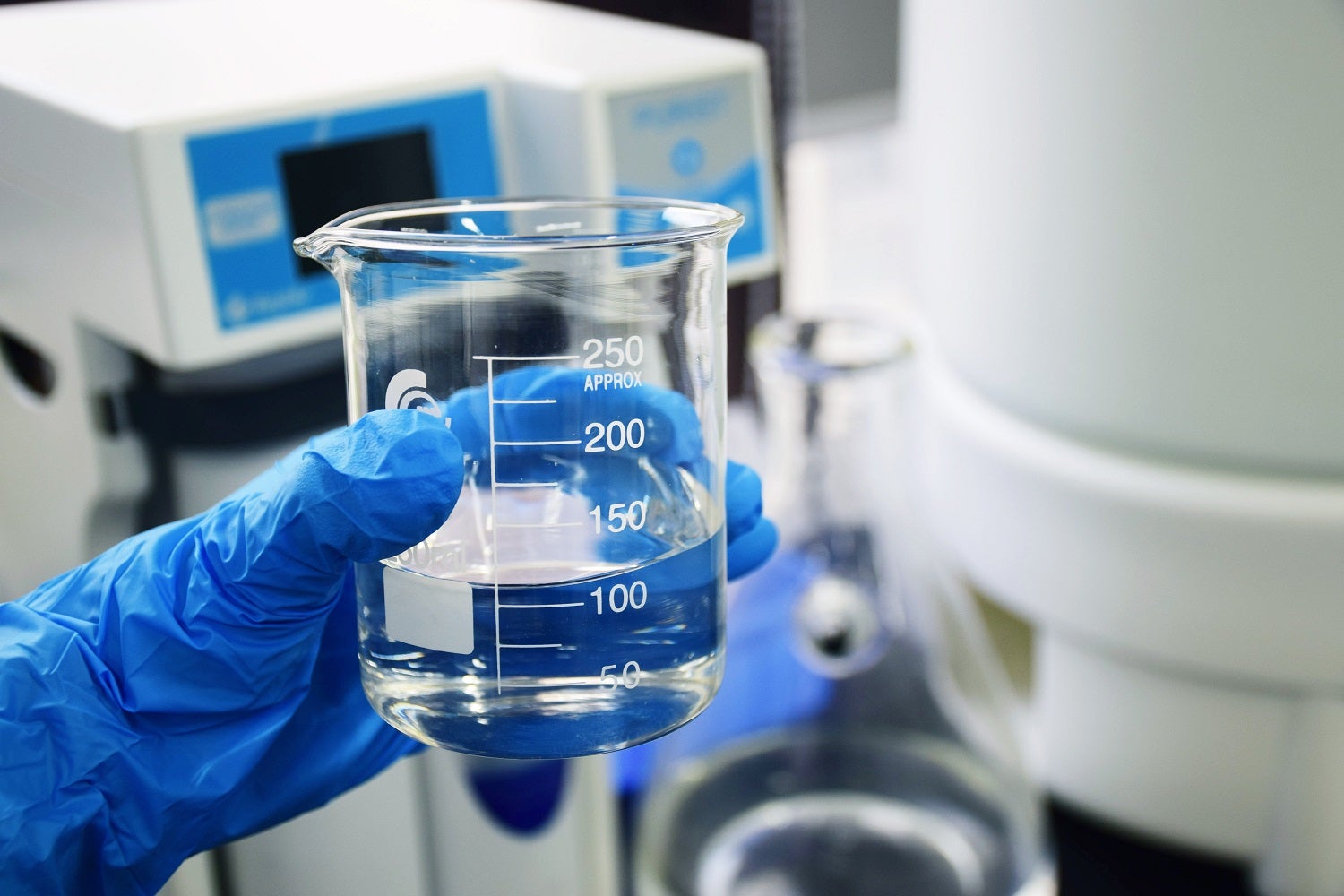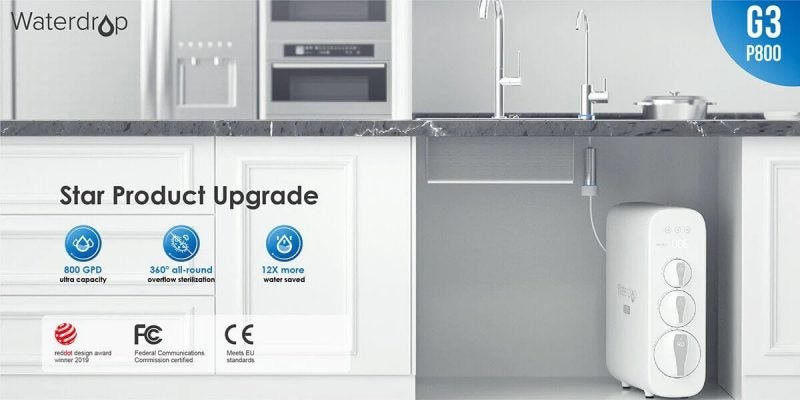Water is a universal solvent because it can absorb molecules from different substances and dissolve them totally. TDS, or total dissolved solids level, is used to describe the amounts of dissolved particles present in certain volumes of water. The TDS may be inorganic or organic. Either way, knowing the TDS status of your household drinking water is important to assess the quality of the water you drink.
This article discusses all you need to know about total dissolved solids, including the various types, how to measure them, and water treatment systems that can help you to reduce their presence in your daily water use.
TDS Levels Explained
The level of organic or inorganic materials dissolved in water is called total dissolved solids (TDS). These include minerals, metals, ions, salts, and more. Consider TDS levels as the standard means of measuring elements dissolved in water asides from the water molecules. Once water encounters soluble materials, it absorbs them, creating total dissolved solids. This is possible because water is a solvent. The TDS in your drinking water comes from various sources, including the plumbing system in your home, road runoff, natural water springs, and even municipal water supply chemicals.
Total Dissolved Solids Types
There is a long list of total dissolved solids types. However, we can group them all into four groups: dissolved metals, organic matter, minerals, and salts. All of these contribute significantly to the overall TDS level.
Salts
Salts occur naturally in groundwater in small amounts. However, these levels increase over time due to human activities like fertilizer use, water softeners use, de-icing of roads, and sewage contamination.
Minerals
The typical natural minerals that constitute TDS levels in water include magnesium, potassium, and calcium. These minerals are produced in small amounts by mineral-rich rocks, which naturally find their way into streams, lakes, and rivers. These minerals contribute to the overall taste of the water and play a crucial role in the daily RDI.
Organic Matter
Dissolved organic matter contaminates water due to the natural decomposition process. When plant materials like algae break down, they also flow into your water through the faucet. This and other natural organic matter are part of the impurities the municipal water treatment process aims to remove.
Dissolved Metals
Dissolved metals find their way into the waterways through pollution. Industrial waste, mining, and other human activities produce these metals, which then leach into different water sources. In addition to the metal pipes, small amounts of metals may also come from rocks, soil, and metal pipes.
Sources of Total Dissolved Solids in Water
TDS in drinking water comes from incidental and intentional sources. Irrespective of the source, total dissolved solids have significant adverse health impacts on humans that drink such water. Here are the differences between the intentional and incidental sources of TDS contamination in drinking water.
Intentional Sources
The most common intentional source of total dissolved solids in drinking water sources is right there on the local grocery store shelves. Can you see those stacks of bottled water in plastic bottles? Yes, they are the culprits. Water in plastic bottles is made using magnesium, calcium, and other additives.
Some manufacturers add electrolytes to their bottled water. However, the minerals in such an electrolyte do not exist naturally in pure water sources. An example of such an additive is fluoride, which supposedly helps prevent tooth decay.
Incidental Sources
The primary sources of organic compounds include water treatment processes, wastewater, sewage, and run-off. All of these have one thing in common—they are derivatives of incidental sources. They may come from something as basic as water pipes running through your neighborhood.
For instance, Flint’s water supply problem started right from the aging water pipes installed throughout the community. Another relatable example is using a mineral spring, which ultimately becomes an incidental source of TDS in the water supply. Water flowing underground mixes with rocks containing high mineral content and dissolves some of these beneficial compounds.
Measuring TDS Levels
The total Dissolved Solids (TDS) level in water is measured as a volume of water, and the unit is milligrams per liter (mg/L). According to the EPA secondary drinking water regulations, the maximum permissible TDS level in drinking water is 500 ppm. Drinking water containing TDS levels higher than 1000 ppm is unsafe for consumption. The risks are even more significant if it exceeds 2000 ppm.
The most effective way to assess your drinking water’s TDS situation is using a TDS meter. The process is also safe and simple. A TDS meter reading of 100 ppm indicates that you have 100 dissolved ions to 999,900 molecules of water in every one million particles. This is considered a low level of TDS.
The only downside of a TDS meter is its inability to determine the exact types of TDS in drinking water. You cannot completely assess your drinking water quality without this important information. This is where a home water test kit comes in. Alternatively, if you can afford and access it, you can go for lab water analysis for a complete picture.
Reducing Total Dissolved Solids in Water
Here are ways you can reduce TDS in your drinking water:
Reverse Osmosis (RO)
The reverse osmosis water filtration method removes impurities from drinking water by forcing the water molecules through a semi-permeable membrane that contains microscopic pores. These pores are only big enough to allow the passage of molecules smaller than 0.0001 microns. Since the TDS molecules are larger than water molecules, they do not pass through the membrane. That means only water molecules end up on the other side, making the water clean and safe for drinking.
Alt: waterdrop reverse osmosis water filter system
Distillation
Distillation is another water purification process that reduces TDS in water. It involves boiling and transforming the water molecules into water vapor. The vapor rises and reaches a cool surface, then condenses into liquid form. The inability of the dissolved salts and other particles to vaporize means they remain in the boiling solution.
Deionization (DI)
Deionization (DI) means the removal of all ionized minerals and salts from the water via ion exchange. This process is effective against both inorganic and organic minerals and salts. Molecules with charges (either negative or positive) are called ions. For deionization to occur, water must pass through a mixed ion exchange bed. The bed comprises positively and negatively charged resins that remove their respective ions. We can compare this process to water distillation, but it is more efficient because it uses less energy and time.




















